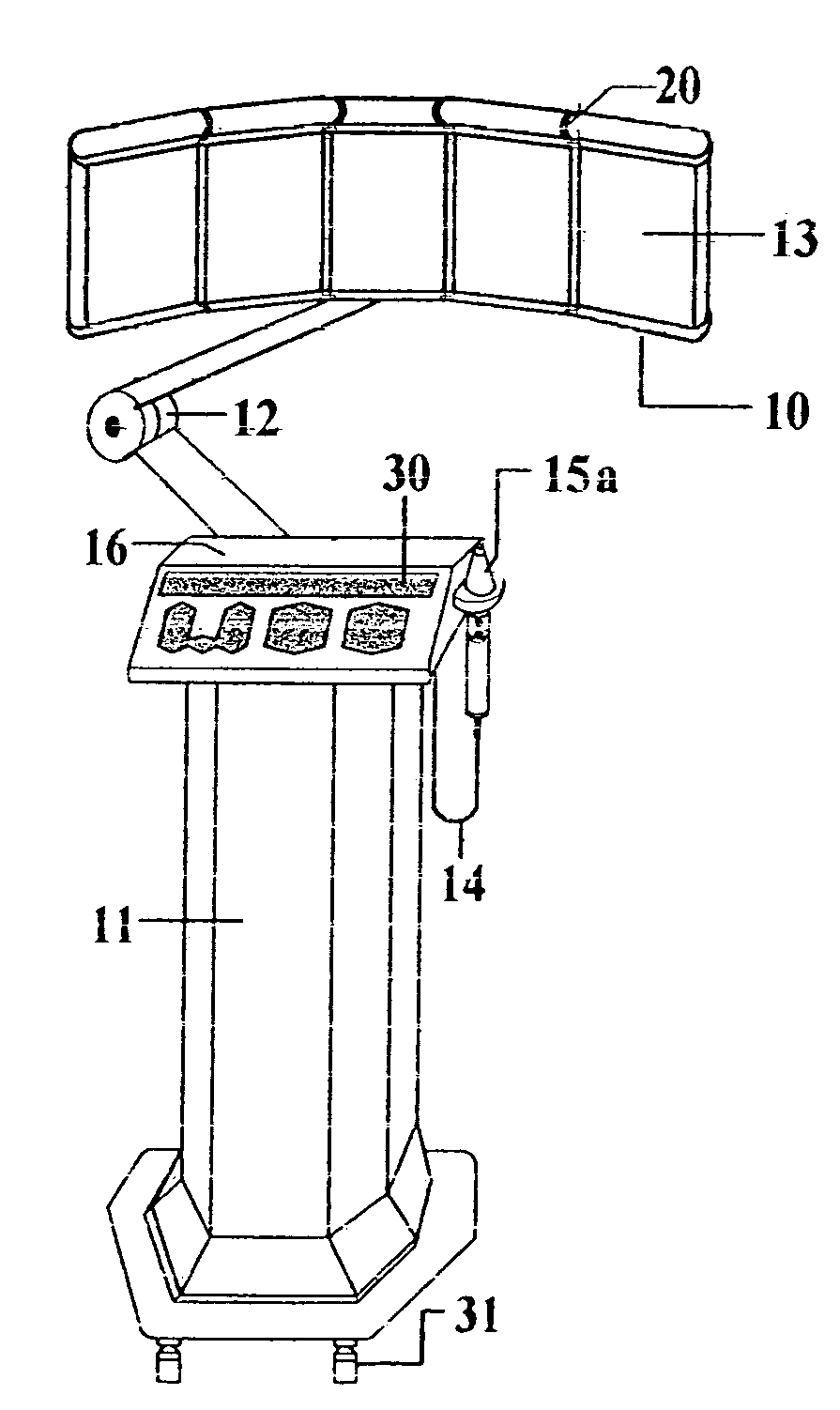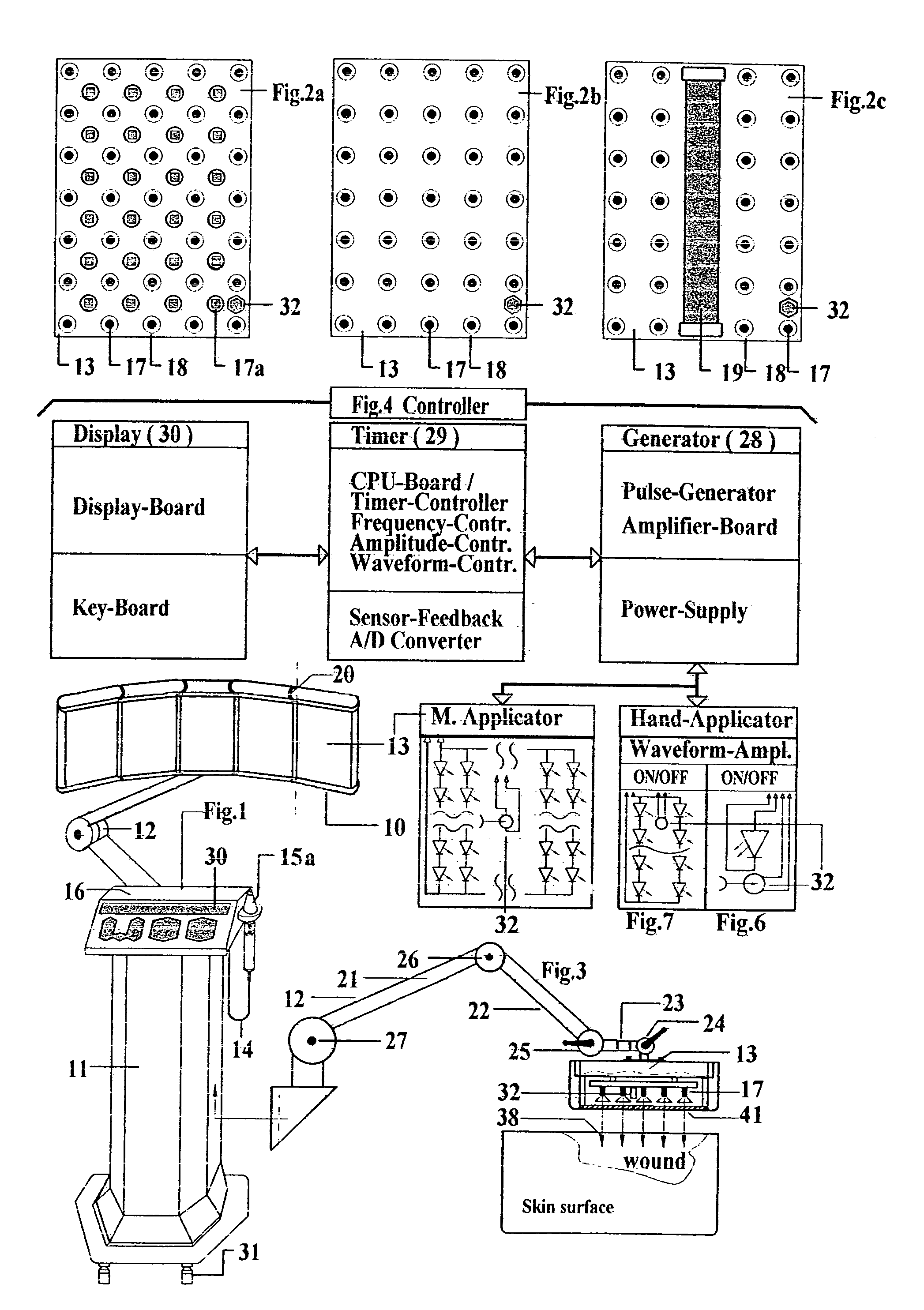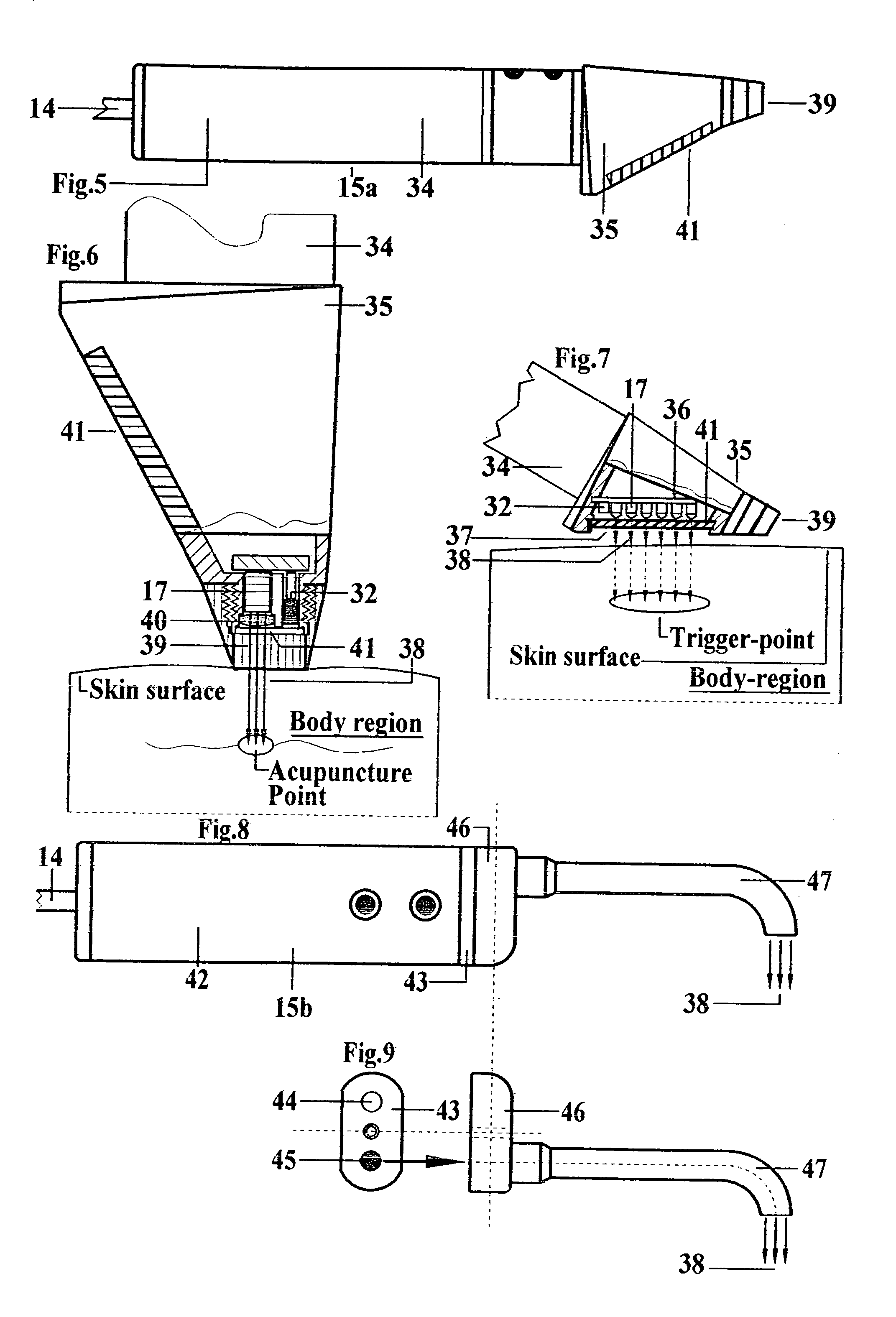Photodynamic stimulation device and method
a technology of photodynamic stimulation and living tissue, which is applied in the field of electrotherapy devices, can solve the problems of decreasing the effectiveness of the device, the availability of infrared radiation within the range of 900 nm, and the inability of the known device to deliver a constant effect during use, so as to enhance the therapeutic capabilities of the device and enhance the vesicular respiration
- Summary
- Abstract
- Description
- Claims
- Application Information
AI Technical Summary
Benefits of technology
Problems solved by technology
Method used
Image
Examples
Embodiment Construction
[0036]As shown in FIG. 1, the inventive device 10 for the energy stimulation of cells consists of a standpillar 11, with which machine applicators 13 (in the following just called applicators 13) are connected through a jointed arm 12. The standpillar 11 is also connected by an electric circuit 14 with hand applicator 15. The standpillar 11, freely movable on wheels, includes control mechanism 16 (described in FIG. 4). whereby the function of the control mechanism 16 can be adjusted and switched ON / OFF at a control board 30 (also called description equipment 30).
[0037]The FIGS. 2a, 2b and 2c show plain surfaced applicators 13. which can be used in the working model according to FIGS. 2a to 2c individually, side by side (in large numbers) or in combination with an applicator. According to FIG. 2a, the applicators 13 in the working model are mounted in a shifting order with semiconductor diodes 17 and 17a (in the following called diodes), whereby shifting the order of diodes 17 means,...
PUM
 Login to View More
Login to View More Abstract
Description
Claims
Application Information
 Login to View More
Login to View More - R&D
- Intellectual Property
- Life Sciences
- Materials
- Tech Scout
- Unparalleled Data Quality
- Higher Quality Content
- 60% Fewer Hallucinations
Browse by: Latest US Patents, China's latest patents, Technical Efficacy Thesaurus, Application Domain, Technology Topic, Popular Technical Reports.
© 2025 PatSnap. All rights reserved.Legal|Privacy policy|Modern Slavery Act Transparency Statement|Sitemap|About US| Contact US: help@patsnap.com



